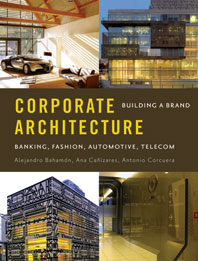| Photo © Saverio Lombardi Vallauri |
| Housed within the Massimiliano Fuksas-designed fairgrounds in Rho, near Milan, the 53rd annual Salone del Mobile recorded more than 357,000 visitors. |
Too big. Too frequent. Too spread-out. Those are some of the complaints heard again and again about Milan's over-the-top furniture fair, which consumes Italy's second-largest city for one week every April. Yet design aficionados keep flocking to the annual event in ever-larger numbers. The 53rd edition of the Salone Internazionale del Mobile attracted more than 357,000 visitors, up 13 percent from last year.
While new and unexpected exhibition venues continue to crop up throughout the city, the fairgrounds in the northwestern suburb of Rho seem to finally be taking back some of the spotlight from those fringe events. British designer Tom Dixon exhibited there for the first time this year. “I decided it is more radical to be conventional,” Dixon said. For years, his unique presentations—sometimes incorporating pop-up restaurants—anchored the once-important Tortona district. More recently, he became a mainstay at the city's Museum of Science and Technology, last year transforming spaces throughout the museum into a temporary design hub past which groups of schoolchildren walked to visit the permanent collection. “The fair became more about entertainment than commerce,” Dixon explains. “I've been coming to Milan for 25 years, and entertaining people for most of that time, but now I'll do some commerce.”
While the fairgrounds served as the commercial meeting point for the furniture world's major players and their partners—Vitra, Knoll, Kartell, Moroso, and the Poltrona Frau Group—it hosted a very anti-commercial exhibit. Where Architects Live provided an intriguing peek into the domestic spheres of world-renowned architects Mario Bellini, David Chipperfield, Massimiliano and Doriana Fuksas, Zaha Hadid, Marcio Kogan, Daniel Libeskind, Bijoy Jain of Studio Mumbai, and 2014 Pritzker Prize laureate Shigeru Ban.
The 17,000-square-foot exhibition, housed between the pavilions of EuroCucina—the biennial kitchen show that this year took the place of the lighting show Euroluce—combined multimedia presentations and discrete constructions. Video interviews with the architects played within spaces designed to resemble aspects of their respective homes.
For Ban, videos of Tokyo were projected onto oval-shaped podiums that mimicked the ovoids of his Hanegi Forest apartment building, designed to avoid cutting down a single tree. Bellini's space featured a large bookcase-staircase like the one in his home in a centuries-old building in Milan's Brera neighborhood. Water figured prominently for Jain, both in the design of his own home in the Indian countryside outside Mumbai, and in his space at the exhibit.
The work of prominent architects could be seen outside the fair as well. Grimshaw partnered with Poltrona Frau for its debut exhibition at Salone. Housed in an early-19th-century foundry building, Elements showcased the work of Grimshaw's Industrial Design Unit, including prototypes for an auditorium chair designed for the firm's latest project (the Patricia and Philip Frost Museum of Science in Miami), seating for transit waiting areas, and an executive table. “Grimshaw has a long-standing history of embedding industrial design components in our architectural projects,” explains the firm's deputy chairman, Andrew Whalley. “The designs unveiled showcase our ability to provide clients with unique solutions which are exclusively tailored for their projects.”
In addition to being included in Where Architects Live, Marcio Kogan unveiled his first design for Italian bathroom-fixture manufacturer Agape. Accommodating more than one person, DR is a sinuous bathtub clad in bent wood. Although an off year for Euroluce, Artemide presented new lighting from Herzog & de Meuron, Libeskind, Bellini, Michele de Lucchi, and Jean Nouvel.
One does not have to be an architect to recognize that the spaces surrounding objects are just as important as the objects themselves. Vitra displayed a seating line by Dutch designer Hella Jongerius: her East River Chair is based on a design for the North Delegates' Lounge at the United Nations headquarters in New York. According to Jongerius, “In a lounge, which is primarily used as a neutral space for spontaneous meetings, the furnishings play an important role in creating a lively setting.”
For its presentation of new products, Dutch furniture brand Moooi incorporated photographs by Massimo Listri, who was granted rare access to the Vatican Museums in Rome and the Palazzo Pitti in Florence to take them. “In a world that is dominated by the new,” says Moooi art director and cofounder Marcel Wanders, “we like to see our works in the context of eternity.”



Post a comment to this article
Report Abusive Comment